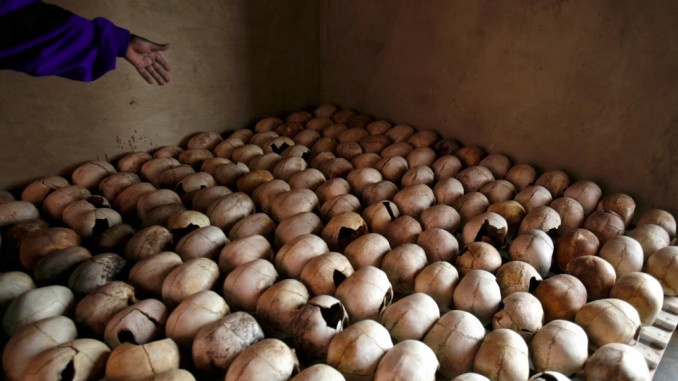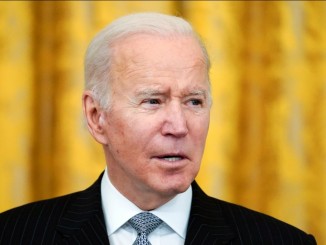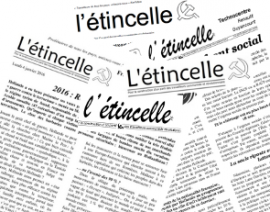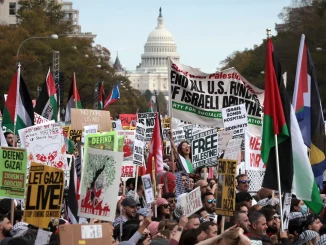
Posted on April 10, 2024 on the website of the New Anti-capitalist Party in France. Translated from French.
“In these countries, genocide is not too important.“
François Mitterrand, President of the French Republic, 1994
Between April and July 1994, the Rwandan government committed the last genocide of the 20th century, killing 800,000 men, women and children of the Tutsi minority.
In the midst of the massacres, French Foreign Minister Alain Juppé spoke to the French National Assembly of a “tribal war,” while a few months later, at the Franco-African summit in Biarritz, Mitterrand spoke of “local chiefs” settling “scores with machetes”.
French leaders, both left and right… thus minimized the role of the government they had recognized and supported throughout the genocide, and the reality of the genocide itself, by hiding behind a racist and condescending vision of African countries and societies.
The notion of ethnic groups and pre-colonial Rwanda
Until the 1950s, journalists and politicians had no qualms about referring to the peoples of Africa as “races” and “tribes.” However, as mentalities evolved and decolonization took hold, their vocabulary became somewhat watered-down. To speak of “ethnic groups” seems more “scientific”… but is just as prejudiced. The term itself is difficult to define, as it implies a classifying, hierarchical view of “natural” genetic determinisms. Although much used, it refers to artificial constructs, with names in Africa often invented by settlers.
Admittedly, the notion existed before colonization, notably in present-day Rwanda and Burundi, where there were three divisions: the Tutsis, the Hutus and the Twas. But this division was primarily socio-economic: the Tutsis were nomadic herders, the Hutus sedentary farmers and the Twas craftsmen. All three populations shared the same language and beliefs, and could be found in the same families or clans. Only a small Tutsi aristocracy pretended to stay away from “mixing” in order to retain power.
Colonization and social transformation
The colonial powers, first Germany and then Belgium after the First World War, relied on this aristocracy. Leaving it in power, the Belgian colonists even enabled it to build a strong, centralized and authoritarian state, annexing small Tutsi kingdoms in the northwest, but all the while serving the interests of the colonial power.
Compulsory labor, crops converted for export to Belgium and other parts of Europe, and various forms of brutality were the lot of the country’s majority peasantry. An assimilated minority, French-speaking and converted to Catholicism, with even a Tutsi clergy, acted as intermediaries between the population and the colonists (or “Bazungu”).
In 1931, to support this division, the colonists imposed the inclusion of ethnicity on identity papers. Because of the general intermingling of ethnic groups, it was not easy to define oneself as Tutsi, Hutu or Twa. In most cases, therefore, the choice was made on the basis of profession alone, making the Hutus the vast majority.
Decolonization and the beginning of the conflict
The war of independence from 1959 to 1963 was waged against both the Tutsi elite and the Bazungu. Massacres of thousands of Tutsis led to the exile of over 150,000 people, most of whom were assimilated to this ethnic group, to neighboring Zaire (now the Democratic Republic of Congo), Tanzania, Burundi and Uganda.
Belgium, not wishing to lose its hold on the country, allowed the “social revolution” to take place, i.e., the overthrow of the Tutsi monarchy. It sided with a Hutu intellectual elite trained in Catholic schools, to whom it transferred power in 1962.
Determined to take the place of the old elite, the new government relied on so-called “historical” hatred and even racial ideology. It did nothing to alter the country’s economic development, which was largely agricultural and focused on exports to Europe (notably tea and coffee). The new Hutu merchant bourgeoisie set up large commercial farms, increasing the number of landless young peasants and the country’s food dependency year after year.
In the 1960s and 1970s, French imperialism gradually took the place of Belgian imperialism in the region. In 1975, France and President Habyarimana’s Rwanda signed military cooperation agreements.
The context of the early 1990s
On October 1, 1990, the Rwandan Patriotic Front (RPF), created by Tutsi refugees in Uganda, with the help of Zairean opposition leader Laurent-Désiré Kabila (future president of the Democratic Republic of Congo), entered the west of the country, starting a war for lack of the right to return. Among its main leaders was the future (and current) President Paul Kagame.
The following December, the government-sponsored periodical Kangura (“Wake Him Up”) published the “Ten Commandments of the Hutu,” calling for segregation of and violence against the Tutsis. The cover featured a photo of Mitterrand, subtitled: “A true friend of Rwanda.” It is in misfortune that the true discover themselves.
Against this backdrop of war between the RPF and the French-trained Rwandan Armed Forces (FAR) supported by extreme right-wing Hutu militias, the fall in the price of coffee in 1991 triggered a food crisis, as a large proportion of the population could no longer afford to eat. The government accused the Tutsi minority of being responsible for the crisis, of monopolizing the country’s wealth, and of being the “enemy of the people”.
Finally, in 1993, France gave way to the UN in its mission to provide military aid to the Hutu regime, while maintaining a strong presence in Rwanda.
The start of the genocide
On April 6, 1994, the presidential plane carrying Rwandan President Juvénal Habyarimana and Burundian President Cyprien Ntaryamira was shot down. Attributed to the RPF, the attack could also have been carried out by an extremist fringe of the “Hutu power” movement, fearing an agreement with the RPF.
While announcing the news, the media close to Hutu power called for the murder of Tutsis, and even non-extremist Hutus. Colonel Bagosora, an alumnus of the French War College, gave the order to assassinate any political leaders who might have opposed genocide. He then led the meetings to set up the Rwandan Intermediate Government (GIR), attended by French ambassador Jean-Michel Marlaud. The GIR brought together leaders of Hutu power tendencies from several parties, which Marlaud noted, while declaring himself “quite satisfied” with its constitution.
This de facto support from France had far-reaching consequences for the course of the genocide. At the national level, it enabled the GIR to legitimize itself and win over hesitant military leaders.
Internationally, France supported the GIR at the UN. Its representative even took up a seat on the Security Council, as Rwanda was allocated a non-permanent seat. The policy pursued by the GIR was entirely in collaboration with Paris.
On April 27, the Minister of Foreign Affairs, Jérôme Bicamumpaka, and his Director of Political Affairs, Jean Bosco Barayagwiza, Secretary of the Executive Committee of Radio des Mille Collines, the keystone in the organization of the genocide, were received in Paris by Mitterrand, Juppé and Prime Minister Édouard Balladur.
Ambassador Marlaud never ceased to defend the government. On May 17, at the UN, France refused to vote for an arms embargo, considering that it would only penalize government forces resisting RPF advances.
The course of the massacre
Relying on misery and fabricated hatred, the government and militias acted directly through the civilian population. They were often the ones in charge of the extermination work.
Every day, Hutu peasants armed with machetes went to their Tutsi neighbors’ homes to massacre them. Of course, the pressure of the militias present in the villages encouraged obedience, since non-extremist Hutus were also on the list of those to be eliminated.
The instigators of the genocide had been trained by French military strategists. France, like the UN and Belgium, didn’t just let the genocide happen, as Macron acknowledged2. It supported it.
And when the RPF’s victory over the FAR became imminent, the French embassy organized the escape of Hutu extremist leaders, hidden among the two million civilians leaving the country, under the name of the UN-mandated “Operation Turquoise,” described as “humanitarian.”
The presence of these officials triggered massacres in the Hutu refugee camps in Zaire by Tutsi militias and Zairian rebels. These events were used by the French authorities and certain media outlets to claim that there had been a “double genocide,” to dismiss the violence committed “on both sides,” and thus minimize the role of the genocidal government and its French accomplices.
The final toll, including indirect victims, massacres and subsequent settling of scores, is close to a million dead, leaving a country physically, economically and socially destroyed.
Capitalism sows death
The leaders of the RPF may have distanced themselves from France, at least until Macron accepted an acknowledgement that fell far short of Paris’s true responsibilities. But they have by no means called into question the country’s social organization and the authoritarian, brutal methods of government they inherited.
Kagame’s responsibility for the mass massacres committed today in the Democratic Republic of Congo by the M23 movement, of which he is the “godfather,” is a reminder: as long as the economies of the countries of the “South” are turned towards the interests of the imperialist countries, as long as power is in the hands of a minority of owners acting in concert with the great powers, the peoples will know only violence, suffering and death.
1The President François Mitterand belonged to the Left-winged Parti socialiste, the French PM Edouard Balladur to the Right-winged RPR (gaullist; founded by Charles De Gaulle followers).
2French president Emmanuel Macron declared in 2021 that France had “responsibilities” in letting the genocide happen, but “wasn’t an accomplice.” He “maintained” this declaration on the occasion of the anniversary.




